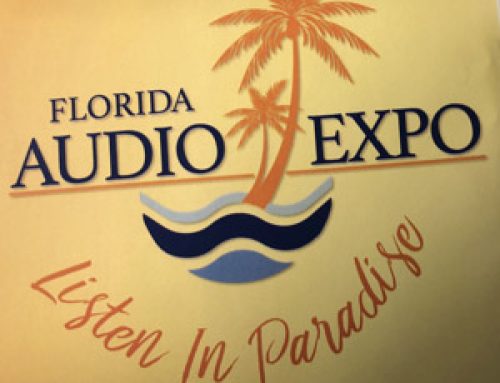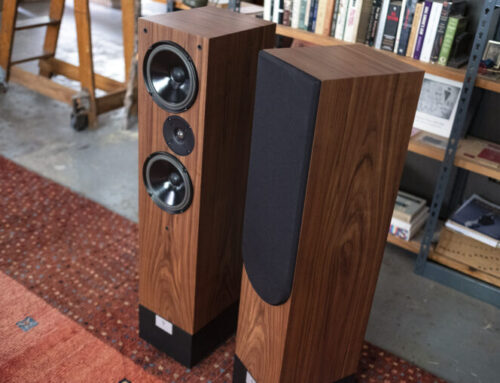BREAK FOR THE BORDER – Jason Kennedy reckons the new
Border Patrol tube amp proves that you can get welly out of a 300B
 Novices to the valve amp scene may not be aware that all tubes were not created equal, and that the 300B triode power tube had a legendary reputation that seemed way beyond the potential of an audio component. That was until this ’30s tube returned to production a few years back- the Chinese started making them first; then the Russians and finally Western Electric, the American company whose original tubes had created the legend, re-joined the game.
Novices to the valve amp scene may not be aware that all tubes were not created equal, and that the 300B triode power tube had a legendary reputation that seemed way beyond the potential of an audio component. That was until this ’30s tube returned to production a few years back- the Chinese started making them first; then the Russians and finally Western Electric, the American company whose original tubes had created the legend, re-joined the game.
In the meantime there have been more than a few amplifiers created that use the 300B and its meagre seven and a half Watt output, most of them single- ended designs like the Border Patrol where one tube drives one channel. This is the least powerful yet also least compromised way of operating a triode tube.
What marks out the BorderPatrol SE 300B is the attention that its maker Gary Dews has paid to power supply design and the resulting neutrality of the amplifier. Virtually every single-ended amp I’ve encountered creates a slightly rose-tinted view of the music it reproduces, and often it’s this euphony that turns regular music lovers into tube fetishists. It’s a very appealing sound. However, very few SE’s have the bandwidth, power and transparency of a good transistor design. Bass and treble extension is often compromised, the designer apparently blinded by the irresistible midrange. However, unless you listen to solely acoustic music the lack of bass grunt can be a significant shortcoming. By going to town on the power supply, however, the Border Patrol puts pay to the notion that SE’s can’t play bass. The secret lies in the hefty black box that accompanies the solid-wood framed BP chassis. This contains three separate choke input filter power supplies for the high voltage, negative bias and heaters. Which leaves only signal amplifying tubes on the main chassis.
This is not the BP’s only USP -even rarer is the use of inter-stage driver transformers which are designed to enable large voltage swings with low distortion, and present a very low impedance to the output tubes. Having heard SE’s with serious PSU’s before I suspect that it’s this latter aspect which gives the BP its surprising low frequency grunt.
“If I hadn’t used this amp I would still be wondering
where the 300B tube got its reputation from.”
SOUND QUALITY
I listened to the BP in two different systems and with Svetlana and WE 300B tubes, the latter adding Ł500 to the Ł3,995 price tag on the amp. For the most part it co-existed with a DNM 3C Twin pre-amp and B&W Nautilus 802 speakers, but also had a spin with JBL4312 Mkll’s and the more sympathetic combination of an SJS Arcadia pre-amp and Living Voice Avatar speakers.
Having heard the BP a few times in the past I was not surprised by its nimbleness, speed, agility and grunt- quietly enthralled would be a more appropriate description. I was, however, shocked to hear that it could cope with the N802s. These fine speakers have proved more difficult to drive properly than most I have encountered, so to find an amp whose output is claimed to be nine Watts at best producing rockin’ beats through them was quite a surprise. It couldn’t reproduce the level that the 200 Watt Sirius achieved but it did a more convincing job than amps with five times its output.
But being an SE design, the BP isn’t just about power, it’s about the ability to reproduce music with its timbral and dynamic elements fully intact.
You tend to take good tone for granted with tubes but when it’s created with so little coloration, as it is here, you can fully appreciate its beauty and richness. Instruments are created for their tonal character, yet so little audio equipment can reproduce this in its full glory. Trannie amps usually dry it up, while most tube amps add extra lushness. The 300B, when used with this much attention to detail, appears to add no colour of its own and combines the skill with lightening speed, removing any sense of electronic intervention. In some respects the lack of tube-type colorations make this an extremely difficult amplifier to get a handle on, the broad bandwidth means there’s a lack of euphony. The BP has a more honest, bare-bones style that rewards improvements in source material to a far greater degree. It makes a lot of trannie amps sound thick and earth-bound with its superb transparency and fleetness of foot. It doesn’t quite match good trannie bass but does a far better job than any other SE I’ve heard. What’s more you get the purity of midrange and treble that such amps are renowned for, say goodbye to grain forever. Add to this superb high frequency extension and you’ve got some idea of its prodigious capabilities.
CONCLUSION
The Border Patrol review has been a long time coming. Gary’s been building the amp since 1992, but it has been worth the wait. If I hadn’t used this amp I would still be wondering where the 300B got its reputation from. One evening with this fine amplifier was enough to reinforce that reputation a thousand times.
VERDICT: SOUND * * * * * BUILD * * * * VALUE * * * * *
Uncommonly capable single- ended design with less colouration and more grunt than any of the alternatives- resolution guaranteed. EDITORS CHOICE




Leave A Comment